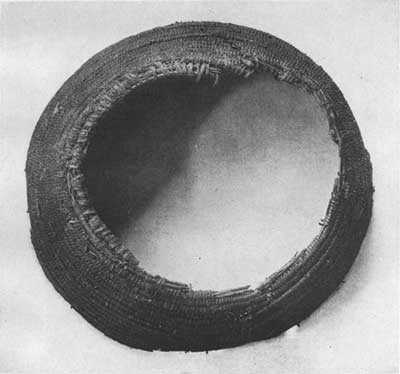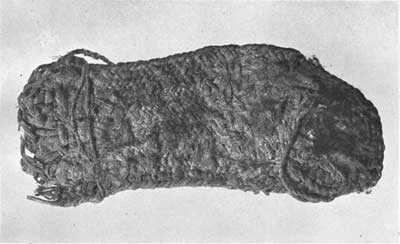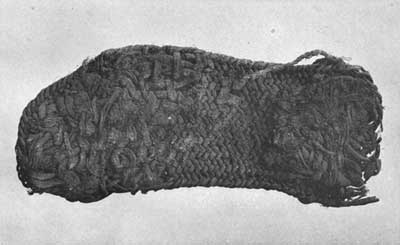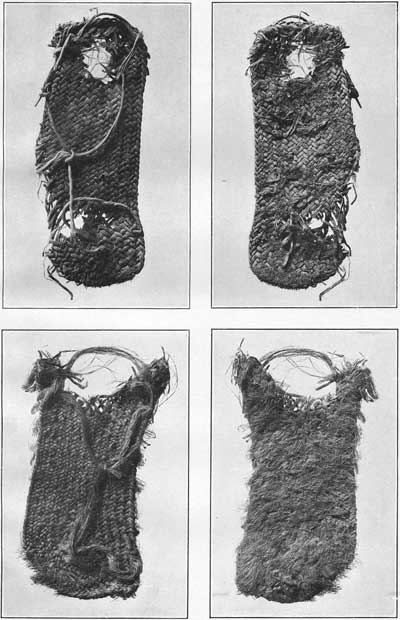A few instructive specimens of basketry or wicker
ware were exhumed at Cliff Palace. One of the most interesting of these
is the unfinished plaque shown in the accompanying figure 2.

FIG. 2.—Coil of basket plaque.
|
One specimen of basketry (pl. 29) has the form of a
hopper; its whole central part was purposely omitted, but the basket is
finished on the inner and outer margins. It recalls a basket used by the
Ute and other Shoshonean Indians, but it is different in form from any
figured in Nordenskiöld's work, and, so far as the author is acquainted
with other specimens of basketry from Mesa Verde ruins, is unique. It is
supposed that when used this hopper was placed on a flat or rounded
stone and that corn or other seeds to be pounded were placed in it, the
stone thus forming the surface upon which the seeds were treated, and
the sides of the basket serving to retain the meal.


Plate 29. BASKET HOPPER—SIDE AND BOTTOM VIEWS
|
The sandals found at Cliff Palace (pls. 30-32)
are practically the same in form, material, and weave as those recorded
from Spruce-tree House. The shape of these, however, is particularly
instructive, as it appears to shed light on the meaning of certain flat
stones, rare in cliff-dwellings, called "sandal lasts." These stones,
one of which is figured in the report on Spruce-tree House, are
rectangular, flat, thin, smooth, with rounded corners, and sometimes
have a notch in the rim at one end. The exceptionally formed sandal from
Cliff Palace (pl. 32) is similar in shape and has a notch identical with
that of the problematical stone objects, supporting the theory that the
latter were used as sandal lasts, as interpreted by several authors.
The sandals are ordinarily made of plaited yucca
leaves, their upper side being sometimes covered with corn leaves for
protection of the feet. The thongs that passed between the toes are
made either of yucca or other vegetable fiber, or of hide.


Plate 30. SANDALS
|

Plate 31. SANDALS
|

Plate 32. SANDALS
|


